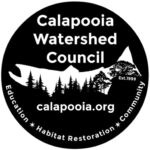
habitat restoration
Tub Run Riparian & Wetland Prairie
Tub Run Riparian & Wetland Prairie Restoration Project is located 8 miles south of Brownsville within the Calapooia Watershed Council’s service area.
Once an abundant ecosystem within the Willamette Valley, native wetland prairies have declined dramatically in extent since the mid-1800s due to a variety of factors including agricultural conversion, urbanization, drainage, and colonization by invasive and woody vegetation.
Today, wetland prairie habitat is regarded as one of the most imperiled in the Willamette Valley ecoregion, with less than 2% of its historic range remaining (Johannessen et al. 1971, Towle 1982).
Restoration components to be implemented include: restoring 36 acres of farmland to wetland prairie, and restoring 37 acres of degraded riparian habitat.
This restoration project looks to restore wetland prairie habitat that has become rare in the Willamette Valley. Habitat loss and destruction are the main drivers that lead to extinction, and a number of prairie dependent bird species that were historically common in the Willamette Valley, including: Wilson’s snipe, Western bluebird, short-eared owl, and Western Meadowlark along with other prairie dependent species, have suffered greatly from habitat loss.
Riparian zones help to prevent sediment, nitrogen, phosphorus, pesticides and other pollutants from reaching a stream. By slowing down floodwaters and rainwater runoff, the riparian vegetation allows water to soak into the ground and recharge groundwater. Slowing floodwaters allows the riparian zone to function as a site of sediment deposition, trapping sediments that build stream banks and would otherwise degrade our streams and rivers. Riparian buffers provide valuable habitat for wildlife. In addition to providing food and cover they are an important corridor or travel way for a variety of wildlife.
Winter 2019 the Calapooia WC, with the help of R. Franco Restoration, planted over 64,000 native trees and shrubs on 37 acres of riparian forest to widen the buffer. This enhanced riparian buffer will provide increased shading to buffer stream temperatures, provide future large wood recruitment to increase instream complexity, and filter run-off from nearby agricultural operations. The species planted included big leaf maple, white alder, pacific willow, thimble berry, swamp rose and red osier dogwood. In addition to work in the riparian zone, the council and landowner have been busy working to restore the 36 acres of wet prairie habitats. There, we have constructed seven vernal pools and reconnected a historic side-channel along Tub Run Creek. The wet prairie was then seeded with native grasses and forbs.



Share this:
- Click to share on Twitter (Opens in new window)
- Click to share on Facebook (Opens in new window)
- Click to share on Pinterest (Opens in new window)
- Click to share on Reddit (Opens in new window)
- Click to share on WhatsApp (Opens in new window)
- Click to print (Opens in new window)
- Click to email a link to a friend (Opens in new window)

